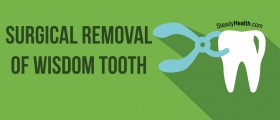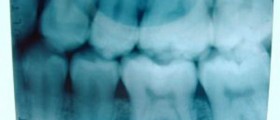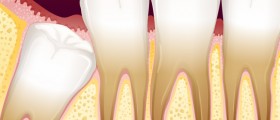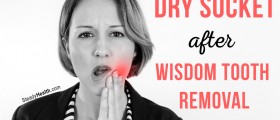
If you have experienced awkward pain inside the mouth, during your age from 17 to 25, resembling toothache even though you had no dental issues, your wisdom teeth were probably growing.
Wisdom teeth are our four third molars, in most cases, even though there can be more of them growing out. Wisdom teeth usually affect other teeth negatively once they come out, creating a lack of space, leading to other teeth moving sideways. Therefore, many people decide to have their wisdom teeth extracted. Yet, 35% of the population do not even have to do this, since their wisdom teeth never come out in the first place.
Wisdom Tooth
As it was mentioned above, wisdom teeth are notorious for their impaction-triggering nature. Namely, wisdom teeth can get vertically, horizontally and distroangularly impacted.
In about 44% of cases, mesioangular impaction is the case, manifesting through the wisdom tooth being angled forward, leaning towards the mouth. On the other hand, vertical impaction is present in about 38% of cases and is expressed through the wisdom tooth not being capable of fully getting out of the gums. Furthermore, a small number of cases, only 6% of them, involve distoangular impaction, where the tooth faces the opposite direction in comparison to the mesioangular impaction, moving towards the inside of the mouth. Finally, the rarest form of wisdom tooth impaction, taking place in 3% of cases, involves horizontal impaction, with the tooth being rotated ninety degrees sideways, affecting the roots of the surrounding molars.
For most of these reasons, wisdom teeth need to be extracted, allowing other teeth to grow and exist unobstructed. Sometimes, the impacted teeth may trigger the formation of cysts and tumors, making surgical removal of the tooth a necessity.
In some cases, wisdom teeth do not grow out of the surface of the gums completely, remaining entrapped by the gum tissue, being very prone to bacterial infections. These teeth can be cleaned with syringes without needless, when filled with water, due to the fact that cleaning them with a toothbrush is almost impossible. However, such a wisdom tooth is known to result in bad breath, pain, swelling and many other problems, making extraction the best choice.
Many other problems may go hand-in-hand with wisdom teeth. Thus, most people, especially dentists, recommend extraction of these teeth as the best possible choice.
Yet, according to researches done in Japan in 2008, wisdom teeth can be used for harvesting stem cells, transplanting wisdom teeth in order to replace damaged or absent molars. However, no successful results have taken place still.
Extraction of Wisdom Tooth
The extraction of wisdom teeth is performed under the local anesthesia, either surgically or by being pulled out. The process is recommended due to the above mentioned reasons. However, in some cases, dentists recommend wisdom tooth extraction due to possible problems which can take place in the long run, such as infections, potential impactions or crowding of other teeth, misalignments and other forms of medical dangers.
The process of wisdom tooth extraction usually takes place without any serious problems. However, once the extraction process is complete, several health issues may get to the surface.
Post Extraction Problems
Post extraction problems usually happen once the patient does not follow the instructions issues by the dentist after the removal of the wisdom tooth. Nevertheless, sometimes, the problems happen despite the patients care and proper recovery.
Once the tooth is extracted, bleeding and oozing is expected to affect the person for a couple of days, subsiding almost completely by the third day. During this time, you are not advised to rinse the mouth since this will prevent the natural process of closing the wound with clots. Hence, rinsing will make the recovery period longer.
Immediately after the tooth is removed, a gauze is placed onto the wound, bitten by the patient in order to stay in place and collect the blood. However, one should be careful not to bite too hard, irritating the wound further, preventing the proper healing process. Tea bags can be placed instead of the gauze, promoting healing.
During the time shortly after the wisdom tooth removal, unpleasant smell may come out of the patient's mouth. Yet, this should stop after a week or two.
Among more serious issues which can take place after the extraction, there is dry socket, being the inflammation of the alveolar bone, once the blood clots fail to form or get removed after the extraction, usually due to not following the dentist's instructions. Smoking, blowing your nose violently, spitting and drinking with a straw are just some of the situations which can lead to formation of the dry socket, which can be very painful and irritating, demanding immediate treatment with painkillers and non-steroidal anti-inflammatory drugs.
Swelling is known to occur after the wisdom tooth extraction, being a normal part of the healing process. Nevertheless, if the swelling lasts for more than a week, you should contact your dentist, since this could be a sign of an underlying infection.
Finally, during the extraction, nerve injury can take place, even though these occurrences are quite rare.
All in all, evolution has still to remove our wisdom teeth from our genetic destiny. According to researches, ancient humans used these teeth in order to chew plants they ate better. Today, we practically have nothing but trouble related to these teeth and the most common outcome of erected wisdom teeth is the necessity for their removal.

















Your thoughts on this
Loading...